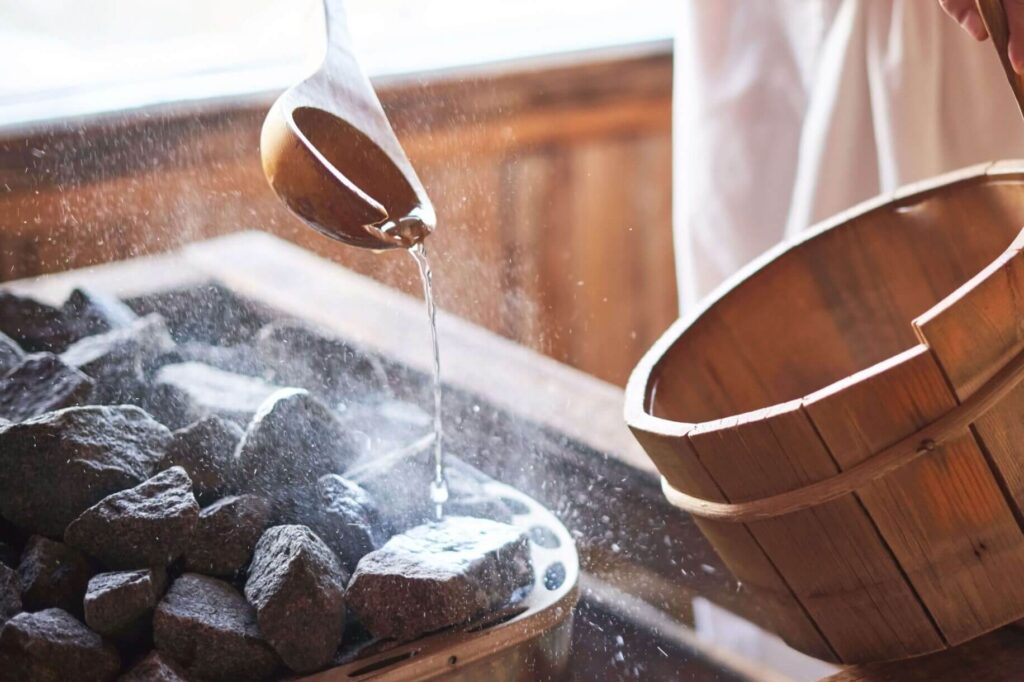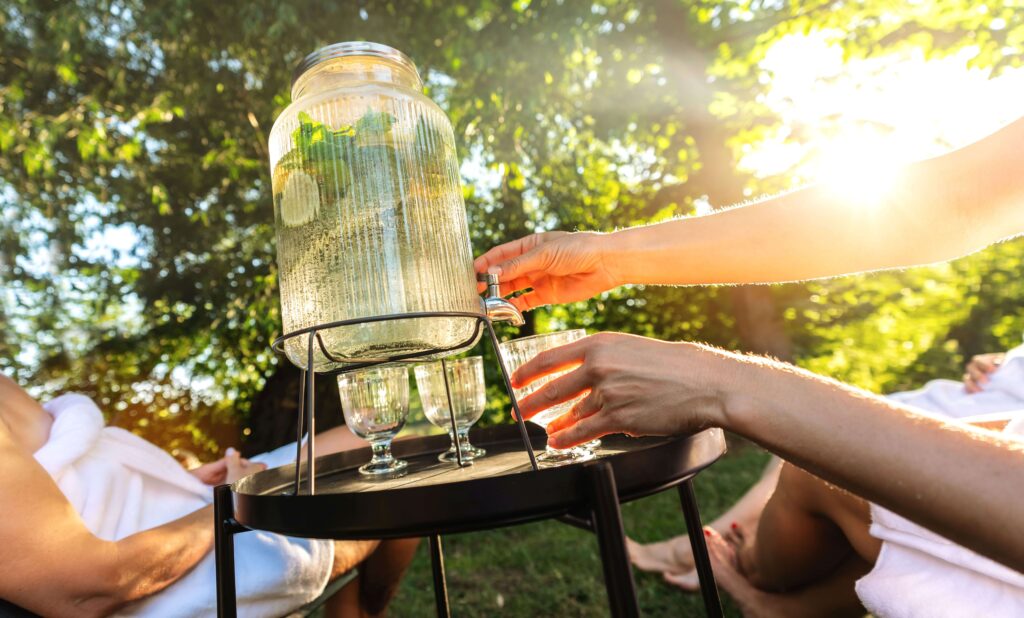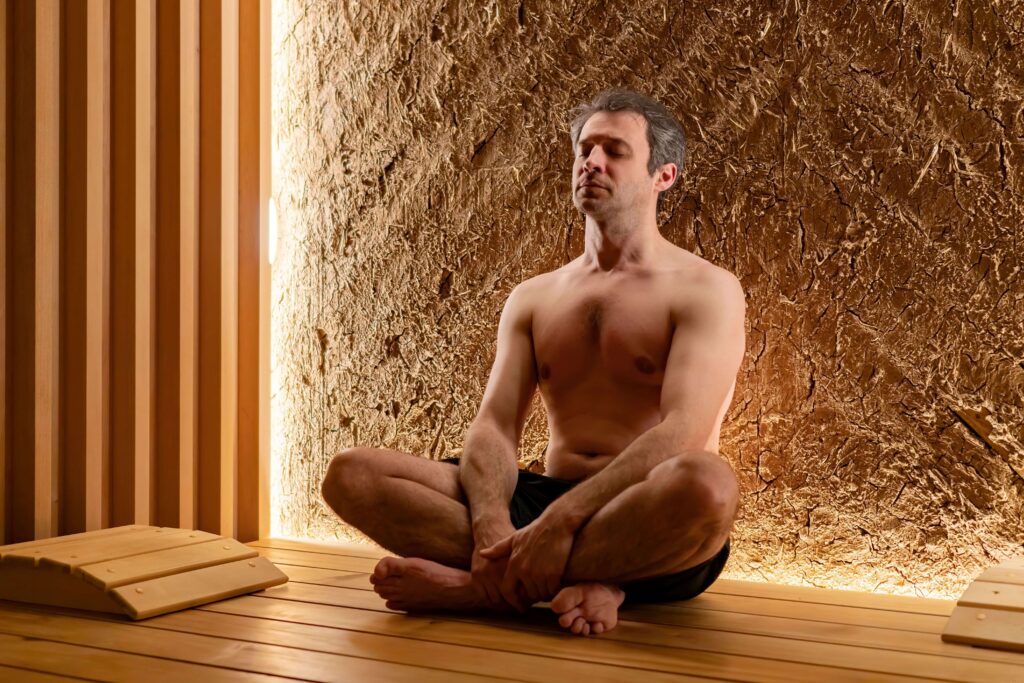

Sauna Education, Trends, & Insights
How to Get the Most Out of a Sauna: 12 Expert Tips
Ever wondered how to get the most out of a sauna session? Saunas offer more than just a warm place to sit. They have an impact on your health, providing benefits like stress relief, improved blood circulation, and muscle relaxation. Whether you're a sauna newbie or a seasoned enthusiast, knowing the best sauna practices can transform your experience from good to great.
To maximize sauna benefits, you need to understand the key elements of a successful session. This guide will walk you through expert tips on setting the ideal temperature, timing your visits, staying hydrated, choosing the right attire, and creating a relaxing atmosphere. By following these suggestions, you'll be well on your way to enjoying the full range of sauna perks and enhancing your overall well-being.
Sauna Education, Trends, & Insights
How to Get the Most Out of a Sauna: 12 Expert Tips
Ever wondered how to get the most out of a sauna session? Saunas offer more than just a warm place to sit. They have an impact on your health, providing benefits like stress relief, improved blood circulation, and muscle relaxation. Whether you're a sauna newbie or a seasoned enthusiast, knowing the best sauna practices can transform your experience from good to great.
To maximize sauna benefits, you need to understand the key elements of a successful session. This guide will walk you through expert tips on setting the ideal temperature, timing your visits, staying hydrated, choosing the right attire, and creating a relaxing atmosphere. By following these suggestions, you'll be well on your way to enjoying the full range of sauna perks and enhancing your overall well-being.
Setting The Ideal Temperature
To get the most out of your sauna experience, setting the right temperature is crucial. The ideal temperature range can vary depending on the type of sauna you're using and your personal preferences. Let's explore the optimal temperature ranges and how to adjust them for maximum benefits.
1: Optimal Temperature Range
2: Temperature Adjustment
3: Temperature Benefits


1: Optimal Temperature Range
For traditional Finnish saunas, the sweet spot typically falls between 80-105°C (176-221°F). This range is generally tolerable for most people while still providing the desired health benefits. Some seasoned sauna enthusiasts might prefer temperatures up to 100°C (212°F), but it’s essential to listen to your body and not push yourself too hard.
2: Temperature Adjustment
Follow the Rule of 200 for optimal sauna conditions: aim for a total of 200 when you add together the sauna’s temperature in Celsius and the humidity percentage. For instance, if the sauna temperature is set to 80°C, strive for a humidity level of around 20% to achieve balanced heat and moisture.
To enhance the sauna experience in traditional setups, introduce steam by adding water to the hot rocks. This creates a humid environment that intensifies heat and enhances the overall sauna session.
Always prioritize your comfort and well-being. If you start feeling uncomfortable, consider lowering the temperature or taking a break outside the sauna to cool down.
3: Temperature Benefits
Different temperature ranges can offer various benefits:
70-80°C (160-175°F): This range is excellent for improving circulation and promoting relaxation.
80-90°C (175-195°F): Higher temperatures can enhance detoxification and may contribute to improved cardiovascular health.
Time Your Session Wisely
To get the most out of your sauna experience, it's crucial to time your sessions wisely. Let's explore the best times of day to use a sauna, how long you should stay in, and how often you should indulge in this relaxing practice.
4: Best Time of Day
5: Session Duration
6: Frequency Recommendations


4: Best Time of Day
The ideal time for a sauna session depends on your personal preferences and goals. Here are some options to consider:
Morning: Starting your day with a sauna session can boost your energy and alertness. It’s an excellent way to jumpstart your metabolism and improve focus for the workday ahead.
Evening: Using the sauna in the evening can help you unwind after a long day. The relaxation induced by the heat can promote better sleep, making it an ideal pre-bedtime ritual.
Post-workout: If you’re looking to enhance muscle recovery, consider using the sauna right after your exercise routine. The increased blood flow can aid in muscle repair and reduce soreness.
Remember, there’s no one-size-fits-all approach. Experiment with different times to find what works best for your schedule and body.
5: Session Duration
When it comes to sauna session length, moderation is key. Here’s a guide to help you determine the right duration:
Beginners: Start with 5-10 minutes per session. This allows your body to acclimate to the heat gradually.
Experienced users: Aim for 15-20 minutes per session. This duration provides ample time to reap the benefits without risking dehydration.
Maximum time: Don’t exceed 20 minutes in a single session, regardless of your experience level.
It’s essential to listen to your body. If you feel dizzy, lightheaded, or uncomfortable, exit the sauna immediately.
6: Frequency Recommendations
To maximize the health benefits of sauna use, consider the following frequency recommendations:
Minimum: Aim for at least once a week to start experiencing positive effects on your immune system and cardiovascular health.
Optimal: For more significant benefits, try to use the sauna 3-4 times per week. Recent studies suggest this frequency can reduce cardiovascular mortality by up to 70 percent.
Daily use: If you’re healthy and feel good, daily sauna sessions can be beneficial. Just ensure you’re staying well-hydrated and listening to your body.
Remember, consistency is key. Regular sauna use, even if less frequent, is more beneficial than sporadic, intense sessions. Always prioritize your comfort and health when establishing your sauna routine.
Stay Properly Hydrated
Proper hydration is crucial to get the most out of your sauna experience. It helps your body regulate temperature more effectively, allowing you to endure higher temperatures for longer durations and reap greater benefits. Let's explore how to stay hydrated before, during, and after your sauna session.
7: Pre-Sauna Hydration
8: During-Sauna Hydration
9: Post-Sauna Hydration


7: Pre-Sauna Hydration
To prepare your body for the intense heat, it’s essential to hydrate well before entering the sauna. Here are some tips:
Drink a glass of water 30 minutes to an hour before your session. This primes your body with the necessary fluids to withstand the heat.
Aim for at least 32 ounces (1 liter) of water before your sauna session, especially if you’ve exercised beforehand.
Avoid alcohol and caffeine prior to sauna use, as these substances can dehydrate your body and hinder your ability to stay hydrated in the sauna.
8: During-Sauna Hydration
Staying hydrated while in the sauna is just as important as pre-hydration. Here’s what you need to know:
Bring a water bottle with you into the sauna. Aim to drink another 32 ounces during your session.
Opt for warm or room temperature water to avoid shocking your system with cold liquid.
Take small sips rather than chugging large quantities at once. This helps your body absorb the water more effectively.
9: Post-Sauna Hydration
After your sauna session, it’s crucial to replenish lost fluids and restore your body’s hydration balance. Follow these guidelines:
Drink water promptly after leaving the sauna to initiate the rehydration process.
Aim to consume about 1.5 times the amount of water you’ve lost through sweating. To estimate this, you can weigh yourself before and after the sauna session.
Consider electrolyte-rich beverages or sports drinks, especially after prolonged sessions or intense workouts followed by sauna use. These help replenish essential minerals like sodium, potassium, and magnesium.
Pay attention to signs of dehydration, like dark-colored urine or excessive thirst. Continue drinking water throughout the day to maintain proper hydration levels.
Create a Relaxing Atmosphere
Creating the perfect ambiance in your sauna can transform your experience from ordinary to extraordinary. By incorporating aromatherapy, music, lighting, and meditation techniques, you can elevate your sauna session into a truly rejuvenating retreat.
Many of these ambiance boosting techniques may only apply to home or private saunas. The majority of community saunas may not allow you to control music, lighting, or utilize aromatherapy.
10: Aromatherapy Options
11: Music and Lighting
12: Meditation Techniques


10: Aromatherapy Options
Aromatherapy plays a vital role in enhancing the sauna experience by promoting relaxation and rejuvenation. Various essential oils can enrich this experience in different ways:
Consider lavender oil for its well-known calming properties, which deepen relaxation, alleviate stress, and potentially boost immune function and sleep quality. Citrus oils such as orange, grapefruit, or bergamot are ideal for uplifting mood and enhancing energy levels. These invigorating scents not only help to reduce anxiety but also bring a sense of joy to your sauna session.
For a revitalizing effect, peppermint or pine oils are excellent choices, stimulating your senses while offering antibacterial and anti-inflammatory benefits. Warm and soothing aromas like cedarwood, frankincense, or birch are versatile options that can help alleviate joint and muscle pain.
When using essential oils in your sauna, ensure proper application by mixing a few drops with water in a spray bottle to lightly mist the sauna rocks. Alternatively, add a few drops to a bowl of water placed near the sauna heater for a subtle and consistent aroma.
Always remember to dilute essential oils adequately and use them sparingly to avoid overwhelming the senses and maximize their therapeutic benefits.
11: Music & Lighting
Creating a serene retreat in your sauna can be enhanced by carefully selecting the right combination of music and lighting to help you unwind and recharge.
When choosing music, opt for soothing melodies or nature sounds that can quiet your mind and alleviate stress. If your sauna is equipped with Bluetooth speakers, take advantage of this feature to play your preferred tunes directly from your device. To maintain a tranquil atmosphere, consider instrumental music or ambient sounds that lack distracting lyrics, allowing you to fully immerse yourself in relaxation.
*If you are using a public or communal sauna it is normally frowned upon to audibly play music when others are present. Utilizing bluetooth headphones is a great way to enjoy music during your sauna session without impacting others experience.
In terms of lighting, soft and dim illumination can significantly enhance the cozy ambiance of your sauna. Using candles or dimmable lights can create a welcoming environment that encourages relaxation. If your sauna offers color therapy options, experiment with different hues: blue or purple lighting can promote relaxation, while warmer tones like red or orange can energize you, depending on your preference and mood.
12: Meditation Techniques
Incorporating meditation into your sauna routine can deepen relaxation and promote mindfulness. Here are some techniques to try:
Focused Breathing: Simply sit in silence and focus on your breath. Allow yourself to breathe through your mouth as the hot air may sting your nostrils.
Body Scan: As you relax, mentally scan your body from head to toe, releasing tension in each area.
Visualization: Imagine the heat melting away stress and negative energy as you sweat.
Guided Meditation: Use a pre-recorded guided meditation specifically designed for sauna use.
To enhance your meditation practice:
- Sit comfortably, leaning against the back of the sauna with your hands in your lap.
- Close your eyes gently and tune into the sensation of hot air moving in and out of your body.
- Focus on the feeling of sweat leaving your body, visualizing stress and tension being released with it.

